July 4, 2011
An early look at the Sony NEX FS-100 HD video camera.
By Gabe Strong
Focus. Chances are, you heard this word a lot as a kid
'You need to focus on your schoolwork!' f you were involved in sports or other activities, you probably heard this word even more often
'Get your head in the game and focus!' Not that I ever heard anything like that of course. These are merely random examples! :-)
I checked Apple's dictionary on my MacPro to see how it defined the word 'focus'. This is what I got.
'The center of interest or activity'.
Well, Sony's new NEX FS-100 video camera has certainly become, dare I say, the focus of many in the video production world in the past few weeks. It offers a super 35mm chip to give operators the ability to selectively focus on objects in a scene. To look at a few scenes shot with this camcorder go to this link.
Are you back? Yes? Ok, lets try to stay focused and not get distracted so easily running off to look at videos. So why is this camera important? Well, ever since video cameras started offering 24p frame rates and HD resolution, this has been the next step....the 'Holy Grail' for independent filmmakers.
If you wanted to give your video the 'high end' look , many thought you needed the resolution, the frame rate, AND the shallow depth of field associated with film. But prosumer video cameras had 1/3 inch chips, and even the professional ones, had 2/3 inch chips which was much smaller than the size used in 35mm film cameras. This ability to 'selectively focus' was behind the recent explosion in popularity of the 'HDSLR'. Still cameras, with their large sensors, added a 'movie mode' which allowed limited video capture. Never mind the fact that the DSLR form factor was all wrong, you could only capture limited length clips, and that there were bad or no audio features on these still cameras.....not to mention the problems with 'line skipping' and moire. These cameras allowed selective focus! You could conduct an interview and totally throw the background out of focus.....you could use the rack focus to shift focus between two actors in a scene, depending on who was talking! Canon 5D's and 7D's flew off the shelves, many going to video professionals who wanted to offer a new or high end look, and distinguish their work from the competition. Video camera manufacturers took notice, and right near the end of 2010, Panasonic released the AF-100 which was an actual large sensor VIDEO camera! It solved many of the problems that HDSLR's had, and video makers, flocked to buy this new camera. Sony, responded with the FS-100, and the F3. The F3 has the same sensor as the FS-100, but has other goodies that put it in another price bracket (about 14 grand). Early units went on sale at the start of June 2011 and camera houses had a hard time keeping the camera in stock. I called 5 places before I found someone who had it in stock. On June, 22nd, mine was delivered. First things first. Yes it CAN give you the shallow depth of field, even with the relatively slow kit lens that you can buy with it. Here's a frame grab of my daughter at the park.
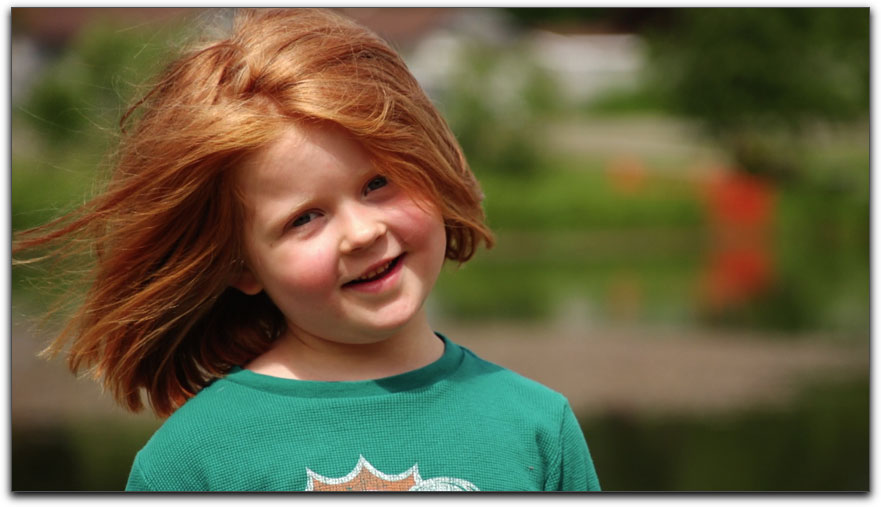
As the picture shows, the 35mm sensor allows you to easily create the shallow depth of field look. But what about the camera itself? How is it to shoot, handle, and how does the image look overall? Well, after 2 days of using it, here is my review. I am not going into the technical specs too much, you can get that elsewhere online. I am going to talk about what it is like to work with. Now keep in mind, I am a VIDEO professional. I am NOT a 'filmmaker'! What this means, is that I am usedto working with shoulder mount professional video cameras. I worked as a TV news photographer/editor for several years before starting my own video production company. While running my company, I have produced documentaries, corporate videos, event videos, and promotional videos, kind of your standard fare. I have NOT produced highly scripted narrative 'films'. I am not used to working with prime lenses, matte boxes, rail set ups and follow focuses. And, I am not a stills shooter with a bunch of DSLR lenses and bodies. I shoot and produce videos, using video cameras. So buyer beware, my opinion may differ greatly from others who may be coming from a different background. With that out of the way, now let's focus on the camera.
Handling
When I first picked up the camera, I didn't really like the way it felt. It's very different than the normal video camera. But the more I use it, the more I like it. It's kind of a 'building block' system that lets you configure the camera different ways. Want to impress a client? Build it into full video camera mode
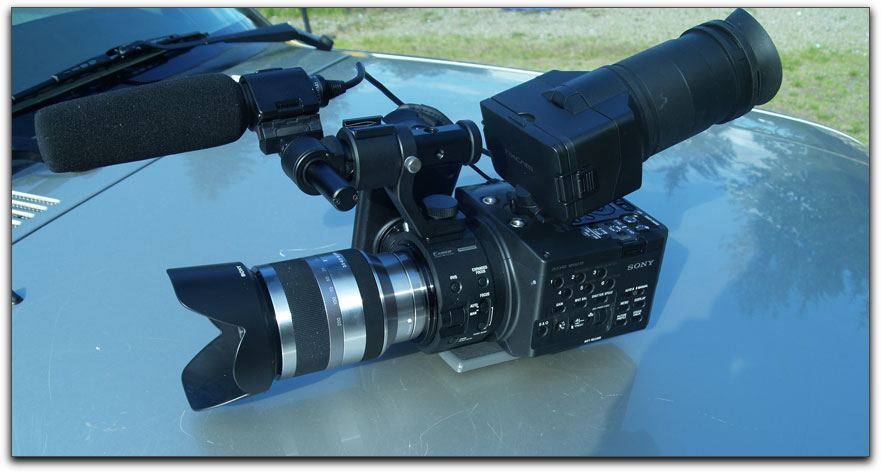
Need to get a shot in a tight space? Strip it down to it's 'HDSLR' form
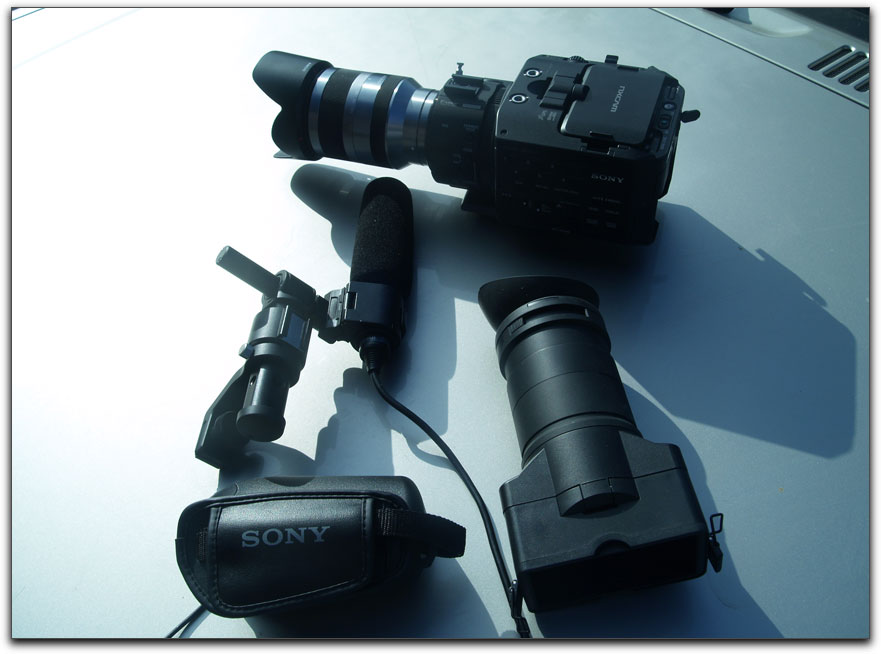
It's flexible, and I've come to think that is a good thing. Handling is so so. Balance isn't great, but not really that much worse than other handycams that you shoot
with on your wrist. There is an adjustable hand grip that you can swivel, similar to the EX-1. The LCD screen is really nice, you can actually see focus, REALLY
see focus on the screen. The expanded focus and peaking are nice touches. It has the typical things you find on a pro camera, picture profiles, gamma curves,
adjustable knee point. Also has a slow and quick (overcranking) button built into the body, so you don't have to go deep into the menus to find this feature.
Full 1080P overcranking too, which is new in this class of cameras. Overall, the body seemed like it was 'ok' build quality. I wouldn't want to give these cameras
to a ENG news station for their 'gear pool' or to a college class, but if you own your gear and take decent care of it, you should be fine. I wouldn't mind
seeing a little better build quality, but it didn't seem horrible to me. It actually reminded me a lot of the Panasonic HMC 150.....plastic, but didn't feel like it
was about to come apart or anything.
Lens
This is an interchangable lens camera. That choice of lens, will mean a lot to your overall experience. This camera is available as a body only, or with a Sony 18-200 E mount 3.5 - 6.3 lens. I decided to buy it with the kit lens. A lot of people don't like the kit lens as it is 'slow'. It seems that they want faster glass, and are looking at prime lenses, cinema lenses or still lenses. Personally, I didn't want to use primes, as there are too many times where I have to change the framing in an interview and don't want to move the whole camera and sticks. Just a quick zoom in or out and I'm ready to keep going. Again, I don't do narrative films with lots of time to set up, so my bias is showing. Cinema zoom lenses are great, but expensive! However, you CAN mount them on this camera with a PL mount adapter, and a rod support system for the lens, because after all you can't have a lens that heavy hanging off a camera this small without support. Or you can buy still lenses. As a matter of fact, I am planning on getting a fast still lens with a decent zoom....an F2.8 24-70 zoom along with a F2.8 70-300 zoom. However, if you are coming from a video background, I think the kit lens is a good buy. Here is why. Even though it is slow, the chip on this camera is SO good, you will need some ND for it anyways (more on that in a moment). The kit lens also has auto iris, auto focus,and a pretty good steady shot function. You can hit the auto buttons to check focus and exposure, and run the camera in full auto if you are running and gunning. I wouldn't do it often, but the push auto buttons are really nice to have as a 'confidence check'. Hit them once and it performs the auto function and goes back into manual so you can tweak it and it doesn't continue to 'hunt'. With this lens, you can actually shoot fast moving things like sports or dance. It gives you a nice, smooth, 'stepless' control of your iris with the iris wheel on the camera body. This was important to me, as I don't like the visible iris 'steps' you get with some still lenses. If you are shooting run and gun, I like to be able to 'ride' the iris as the lighting changes, and the kit lens allows you to do that. And it has a nice zoom range. To get a fast still lens, you are only going to have a zoom range of about 3x at the most. This lens gives you an 11x zoom, which is more like a traditional camcorder. The video that comes out of the kit lens, looks really good, even if it is looked down on by many in the cinema crowd. I would definitely find a place for the kit lens in your lens bag as an 'all around lens', if you foresee any need to shoot unscripted pieces with less set up time.
But the beauty of this camera is that when you decided to go to slower paced shooting where your clients give you set up time, you can put nicer glass on it. It can be one type of camera one day, and a different style the next day. However, be aware if you want the camera to 'talk' to the lens, you need to do your research. Only Sony E-mount lenses will give you all the functions. Sony A mount lenses will give you control of the iris through the camera body. Other still lenses (Canon lenses for example) will have to wait for an upcoming adaptor from Birger.
Negatives
No camera is perfect. There are a few issues with this camera. The biggest issue I had with it, is that there are no ND filters built in! With a sensor this sensitive, I found myself having to stop the iris down to F22 to shoot in bright daylight and this was with the slow kit lens! To get shallow depth of field shots, I increased the shutter speed, allowing me to open my iris, but this isn't ideal, as motion looks a little strange. So, you will need to either buy a matte box with square slide in ND filters, or buy a variable ND filter. There are several variable ND filters which screw in, allowing you to set anywhere from 2-8 stops of ND. You will probably pay at least $200 for a good variable ND, and as much as $400. Plus, you need one for each different size lens you have, or you will need 'step' rings. If you are only planning on having two or three lenses it may not be an issue. If you are going to have a lot of lenses, a matte box with slide in filters may be a better fit. Regardless, you WILL need some ND filters if you want to achieve shallow depth of field. If you don't care about that, you can always just step the iris down and shoot at F22 in the sun. The video still looks great....comparable to XDcam HD, which isn't surprising as those are Sony cameras with smaller sensors. But if you were just going to do that, it would probably be better to just buy an EX-1 or EX-3. Sony has said that because of the shallow flange depth, they couldn't build in ND. That may be the case, but this camera REALLY needs ND if you want to open up the iris. It also has no HD-SDI port, electing instead for the consumer HDMI port. However, you CAN output 4:2:2 or even 4:4:4 with timecode, out of the HDMI port to an external recorder, and bypass the in camera compression (which is actually surprisingly good.) There is only one card slot, so buy a big card or the optional hard disk attachment if you need long recording times (such as a conference). Also, the LCD screen cannot be tilted down, making it hard to shoot from over your head and see what you are doing. What I did, was fold the LCD screen flat into the body, hold the camera over my head upside down so I could see the screen, and then flipped the image in post.

But it's another workaround you should be aware of. Another 'gotcha' is that you must swivel the handgrip to be at a 90 degree angle to the camera body if you want
to adjust the tension screw on the LCD screen to keep it looking up if you have the viewfinder on it. Otherwise the tension screw will be blocked by the handgrip, keeping
you from tightening it, which will cause the viewfinder to flop down.
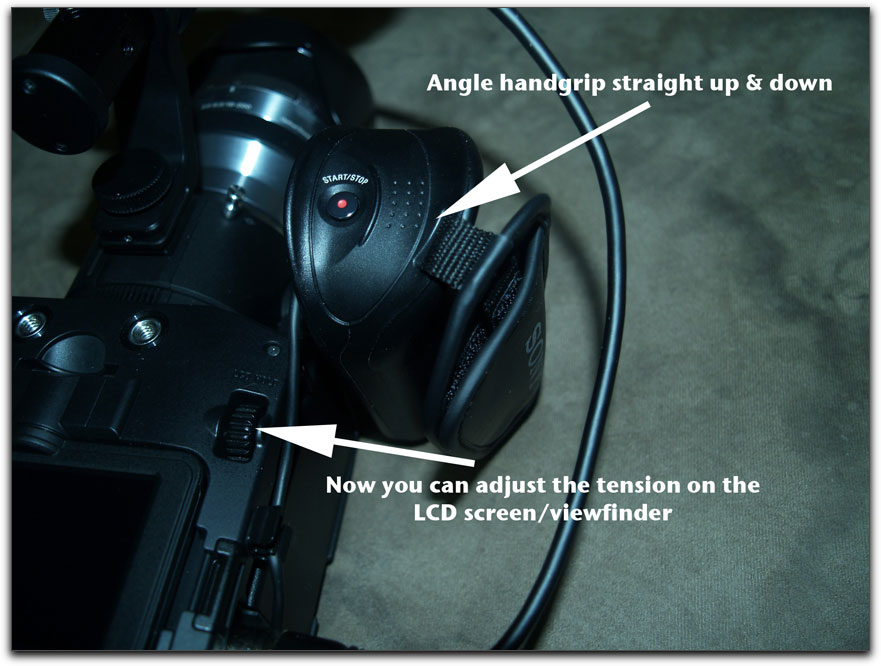
Positives
The biggest positive about this camera is the imaging sensor. It really steals the show, and I cannot say enough about it. I am amazed that a camera of this price, has a sensor that is this good. Even with the slow kit lens, I could get very shallow depth of field. But unlike a HDSLR, the shots not only hold up, but look fantastic on wide shots. You get to pick, close the iris down for more traditional video look, open it up for the more filmic look. Everything you shoot with this camera looks nice. One person told me 'Those images, they look like a photograph, only they are moving images!' I thought that was an appropriate way to put it. And the flip side of needing ND in the sunlight, is that this camera can literally see in the dark. Furthermore, if you need to add gain, it is virtually noiseless!! While shooting a tour video for a local coffee company, I followed the tour into the warehouse. Oh no! It was dark as the inside of warehouses often tend to be.
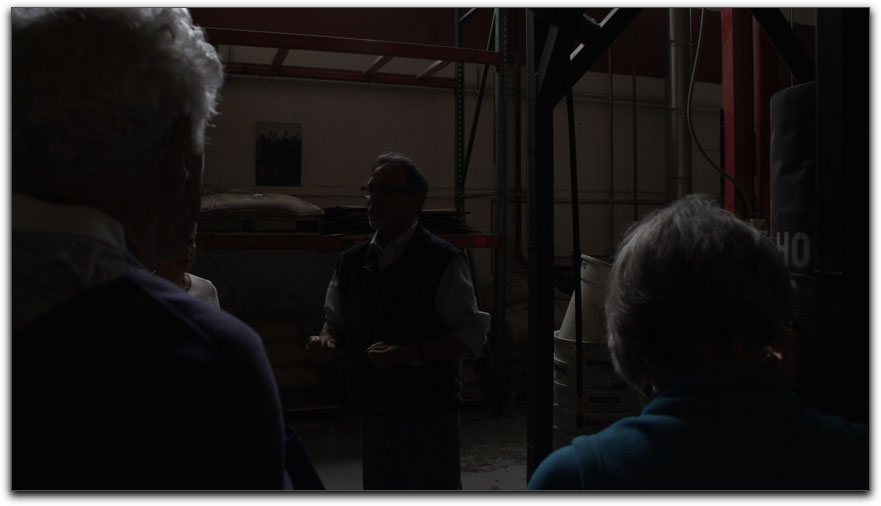
So I gained up to +12, and saw this
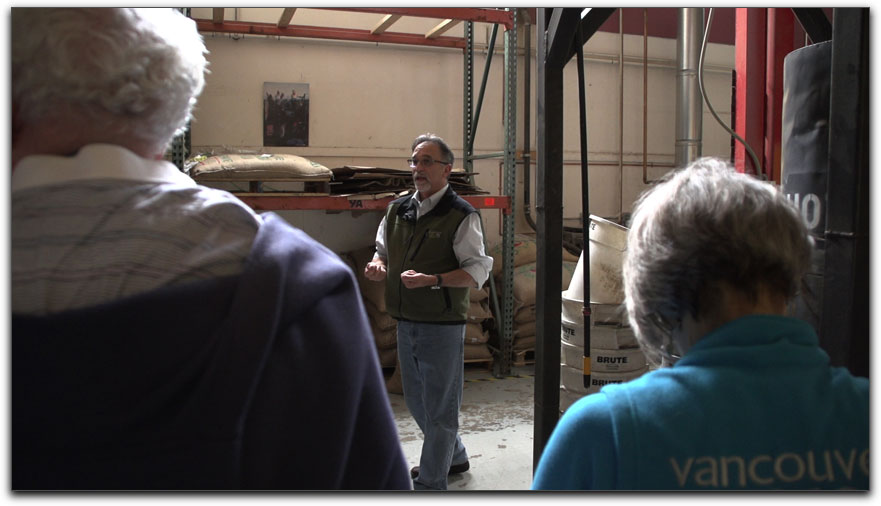
When I have shot in this location in the past, I saw what you see in picture 6......AFTER I had 'gained up'.... I have tried shooting with several cameras in there, and
always had to break out the light kit, just to get a usable shot. With the FS-100, I just went to the medium setting (9db) and voila, I could see in the dark!
Remember a couple things here. First, when you gain this camera up, it is remarkably clean. You can gain up to +30, and although you can see a little grain once
you get that high, it is still not horrible, and is cleaner than many cameras at +9. Second, remember, I am using the kit lens which is a F 3.5-6.3, so it's pretty
slow. And still, I was able to get better looking footage than any other camera I had ever tried in those dark conditions. I have to say, this image sensor makes
the camera a 'game changer' in my eyes. Other nice things. Best LCD I have seen on a camera (looks like the EX-1/3 LCD to me.) Also, a new format full 1080 60p
at 28 Mbps, the former best was 1080 30p at 24 Mbps. This allows for 'overcranking' for slow motion WITHOUT having to drop down to 720p! This camera also has
all the professional goodies, picture profiles, gamma curves, knee point, slope, and so on. Furthermore, this is a tapeless camera, but along with the benefits of the
tapeless workflow, there has always the dreaded archiving issue. P2 cards and SxS cards can give you sticker shock with the initial investment required. However,
this camera records to SDHC cards! I use class 10 to ensure that I can overcrank on them. There are two major advantages here. The first, is that your 'deck' is a $15
SDHC card reader. The second, is the cost of the media itself. I ran over to the local Walmart and bought a 16 gig, class 10 card for $39. It will hold roughly 90 minutes
of video at the highest quality. At this cost, you can almost treat them as you did tapes in the past....archiving the video right on the cards and saving the cards. They are
certainly not too much more than an XDcam disc or a HDcam tape. As for post production, Final Cut Pro 7 (I haven't jumped into FCP X yet!) recognizes the camera or
cheap card reader instantly in the Log & Transfer window, and transcodes into ProRes 422. This is done fairly quickly on my Quad Core MacPro, much faster than realtime
tape based capturing. I actually don't mind this as I have time to log other clips as each one is being transcoded, and I can start working with the clips immediately once
they are transcoded, you don't have to wait for FCP to finish transcoding the whole batch of clips. Plus, editing ProRes, is almost like editing SD, the computer just handles it
so easy.
Wrap up
This is an interesting camera. It's different from what I am used to. The kit lens is a strange hybrid between still lens and video lens. It has a free spinning focus ring which many don't like, and unlike video lenses, there is no iris ring, you adjust iris with the iris wheel built into the camera body. But, there is a viewfinder icon which shows how many meters away you are focused, that changes as you change focus, which can help you hit focus 'points'. The iris changes smoothly without stepping. The auto functions work pretty good, especially when you consider how much more it has to worry about focus with the big chip it has. It brings back the third dimension, depth, to video production. You get a real sense of the depth of a scene, when there is this much difference between what is in focus, and what is not! Really, this camera has abilities unlike any other camera in it's price range, except for the Panasonic AF100. You knew it was coming to this didn't you? The inevitable comparison. I don't want to get too caught up in it, but in the under 10k price range, these are the only two cameras that have the 'big sensor' with the features of a video camera. The Panasonic AF 100 is also a fine camera. It has a couple things the FS 100 doesn't, like built in ND filters, and an HD-SDI port. If you are looking at large sensor cameras, that could swing the balance to the AF 100. What the AF 100 doesn't have is this gorgeous super 35mm sensor instead, using a significantly smaller 'Four Thirds' sensor. They are both good cameras, the Sony has some ergonomic/handling issues, that you have to work around but it has a better sensor. I am not putting down the Panasonic in any way, it is great, and I REALLY like it's built in ND filters. To me, that is the single biggest problem with the FS 100, you want to have ND filters to control your depth of field, otherwise, why have a big sensor camera? But you can work around this with ND filters on the front of your lens.....but you can't replace the sensor in a camera. So for me, when it came time for to choose with my money, I chose to 'focus' on the image quality. To me, that is what is most important in a camera. But really, you can't go wrong. Either one of these cameras would be almost unthinkable just a few short years ago. Now we have TWO of them! I predict these two cameras will cause the big sensor market to 'blow up'. Accessories, lenses, and even more big sensor cameras are on the way as the camera manufacturers 'refocus' on what consumers want. Now, it's time for me to go shoot......if I could just find my car keys,.....and cell phone......and wallet......
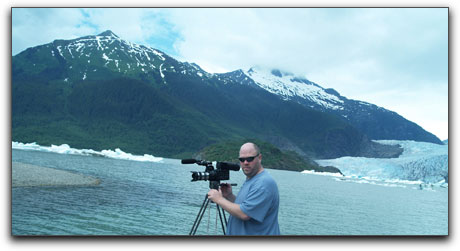
When he is not playing Xbox 360, taking care of his three kids, or reading the message boards at Kenstone.net, Gabe Strong runs a video production company in Juneau, Alaska. He has won an Alaska Broadcasters Association Goldie award for videography&editing. Some of his clients include, CNN, The Weather Channel, The Travel Channel, Associated Press TV, ENGFTP.com, the State of Alaska, and The Alaskan Brewing Company. Stop by his website and say hi at: www.gforcevideo.com.